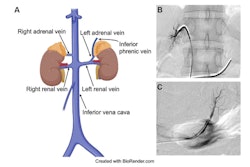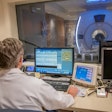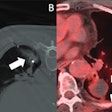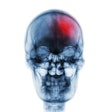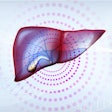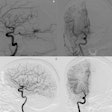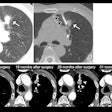Diversity in integrated interventional radiology residency is lacking, suggest findings published May 16 in the Journal of the American College of Radiology.
Using national medical residency reports, researchers led by Mina Makary, MD, from Ohio State University in Columbus found that interventional radiology is one of the least diverse among medical specialties, with only minimal progress seen.
“A concerted effort to increase awareness and inclusion in the specialty would broaden its appeal and may eventually improve its availability,” Makary and colleagues wrote.
Despite efforts to increase diversity in imaging programs, women and people of racial and ethnic minority backgrounds continue to be underrepresented in radiology compared to other large medical residencies.
The American Board of Medical Specialties in 2014 approved new certificates in both interventional and diagnostic radiology. This pathway presents an alternative training pathway for receiving dual certification, the team wrote.
Makary and co-authors assessed diversity within interventional radiology programs, analyzing data from annual American Association of Medical Colleges Reports on Residents, observational cross-sectional studies. The team included data collected between 2018 and 2023, focusing on demographic information from residency programs, including integrated interventional radiology. The team also compared demographic data among 21 medical specialties.
Among these specialties, integrated interventional radiology in 2023 ranked 20th for the representation of women, 21st for Black residents, and 19th for Hispanic residents, respectively.
Also, women and Black residents saw minimal increases during the study period, while Hispanic residents saw a slight decrease.
Proportion of residents by demographic between 2018, 2023 | ||
Resident demographic | 2018-2019 academic year | 2022-2023 academic year |
Women | 20% | 22.3% |
Black | 2.2% | 3.8% |
Hispanic | 7.1% | 6.6% |
Finally, the percentage of American Indians and Alaska Natives decreased from 0.8% to 0.7%, while the percentage of Native Hawaiians and Pacific Islanders increased from 0% to 0.1%.
The study authors highlighted that awareness of interventional radiology and its place in medicine is “relatively low” among students, especially underrepresented student populations. This may lead to the specialty missing out on strong candidates, they added.
“Through new efforts and the continuation of existing efforts, interventional radiology would benefit from initiatives to raise awareness and early exposure to the field and improve outreach and mentorship to women and [underrepresented] medical students,” the team wrote.
The full study can be accessed here.







